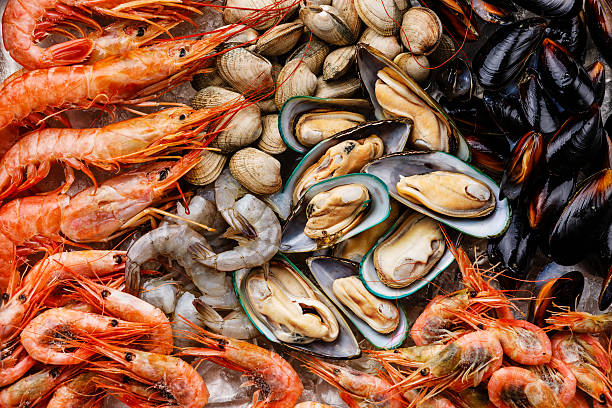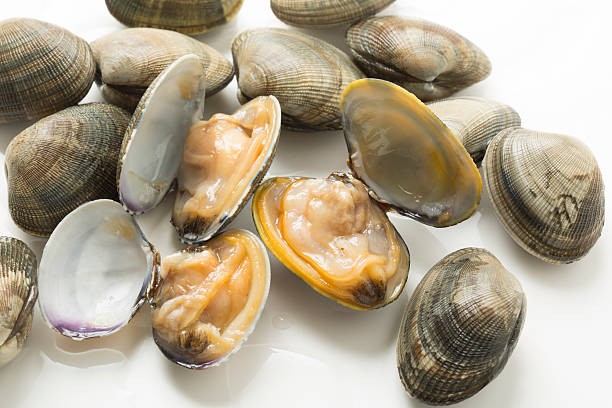Shrimp, Lobster and More: What You Need to Know About Shellfish

You may not realize it, but most of the seafood you eat is shellfish. The culinary world has a plethora of delicious shellfish dishes. Because of their versatility, many people assume that it’s safe to eat all types of shellfish. However, some species cause an increased risk for illness when consumed raw or undercooked.
Keep reading to learn more about what you need to know about shellfish and its consumption rules in NZ.
What is a shellfish?
Shellfish refer to a wide variety of aquatic animals that live in or around the ocean. Shellfish include oysters, mussels, clams, scallops, and common shrimp. These animals are filter feeders and produce a shell made of calcium carbonate as a means of protection. Because shellfish are a living filter for the ocean, they are an important part of the water filtration system. Shellfish fall under the category of aquatic invertebrates and are grouped with insects, crustaceans and other small arthropods. Shellfish include shrimp, prawns, crab, lobster, mussels, oysters, clam, and scallops.
Which Shellfish Should Be Consumed Raw or Frozen?
Some shellfish, such as oysters and mussels, can be consumed raw. However, other types, such as shrimp, prawns, and scallops, should only be consumed frozen. Clams, oysters, mussels, and scallops can be consumed raw and do not require any preparation. However, freezing these shellfish can significantly decrease the risk of illness. While some types of clams, such as cherrystone and littleneck clams, are safe to eat raw, other types, such as Atlantic blue, San Diego, and common Olympia clams, should never be consumed raw. Raw shellfish, such as oysters, should be rinsed before eating to remove any parasites. Similarly, clams, mussels, and scallops should also be rinsed before consumption to remove any dirt or sand. Although these species are not known to be harmful to consume, consuming them directly from the ocean may increase your risk for illness.
Which Shellfish Should Be Cooked Before Consumption?
Because raw shellfish pose a significant risk to human health, most types of shellfish should be consumed only when they have been cooked. Oysters and mussels are generally safe to consume raw, but they should never be consumed raw, and these species are also safe to cook. Additionally, these species may not be safe to consume if they have been contaminated with harmful bacteria. Therefore, it is best to cook these types of shellfish before consuming them. Many types of shellfish can be safely cooked by boiling, steaming, or baking. However, some shellfish, such as red king crab and king oyster, should only be cooked to an internal temperature of 58°C (136°F). Cooking shellfish at higher temperatures kills the pathogens that make people sick. While cooking shellfish thoroughly removes any toxins present in the shellfish, some toxins may not be destroyed. Therefore, it is important to follow cooking instructions carefully and to avoid serving those who are allergic to seafood.
The Risks of Raw Shellfish Consumption
Raw or undercooked shellfish, including oysters, clams, and mussels, can cause people to become ill. These types of shellfish have the potential to contain harmful bacteria, such as vibrio and enterotoxigenic bacteria. The latter are particularly dangerous as they can enter the bloodstream and cause systemic infection. Raw shellfish pose a higher risk for acquiring these types of bacteria than cooked shellfish, as cooking kills the pathogens that cause illness. Therefore, consuming only raw shellfish increases your risk of illness and may put you at risk for a more serious illness. Similarly, scallops, mussels, and clams may contain toxins, such as domoic acid. Domoic acid is a type of toxin that affects the central nervous system, causing symptoms such as nausea, vomiting, diarrhea, headache, dizziness, and memory problems.
Shrimp and Prawns
Shrimp and prawns are shallow-water shellfish that are high in iron and protein. These types of shellfish can be consumed raw or cooked. Cooking shrimp and prawns to an internal temperature of 58°C (136°F) will significantly reduce the risk of harmful bacteria, as well as reduce the amount of domoic acid present in these shellfish. Shrimp and prawns are low in fat and salt and are a healthy source of protein for people with high blood pressure. They are also a rich source of vitamins, minerals, and omega-3 fatty acids. Shrimp and prawns can be eaten raw or cooked, and the healthy fats present in these shellfish make them a great addition to seafood salads or pasta.
Oysters and Clams
Oysters and clams are low-fat and high-protein shellfish that are high in zinc and iron. These types of shellfish can be consumed raw or cooked. Cooking clams and oysters will significantly reduce the risk of harmful bacteria and reduce the amount of domoic acid present in these shellfish. Oysters and clams are rich in vitamins and minerals, including iodine, which is essential for good health. Both oysters and clams can be eaten raw or cooked. When choosing oysters and clams, make sure to choose safe varieties that have been harvested from clean waters. Look for oysters and clams that are closed or have a tight opening. If possible, buy oysters and clams that have been alive for 24 hours before consumption to reduce the risk of gastroenteritis.
Mussels and Other Mollusks
Mussels and other mollusks are low-fat and high-protein shellfish that are high in zinc and iron. These types of shellfish can be consumed raw or cooked. Cooking mussels and other mollusks to an internal temperature of 58°C (136°F) will significantly reduce the risk of harmful bacteria, as well as reduce the amount of domoic acid present in these shellfish. Similar to oysters and clams, mussels and other mollusks are rich in vitamins and minerals. They are also low in fat and salt, making them a nutritious and healthy addition to any meal. When choosing mussels and other mollusks, make sure to choose safe varieties that have been harvested from clean waters. Look for mussels and other mollusks that are closed or have a tight opening. If possible, buy mussels and other mollusks that have been alive for 24 hours before consumption to reduce the risk of gastroenteritis.
Lobster and Other Crustaceans
Lobsters, crabs, and shrimp are high-fat and high-protein crustaceans that are low in zinc and iron. These types of shellfish can be consumed raw or cooked. Cooking lobster, crabs, and shrimp to an internal temperature of 58°C (136°F) will significantly reduce the risk of harmful bacteria, as well as reduce the amount of domoic acid present in these shellfish. Similar to shrimp and prawns, lobster, crabs, and shrimp are low in fat and salt and are a healthy source of protein for people with high blood pressure. They are also a rich source of vitamins, minerals, and omega-3 fatty acids. Lobsters, crabs, and shrimp can be eaten raw or cooked and are a rich source of vitamins and minerals.
As you can see from this article, it is important to consume only raw or frozen shellfish (excluding oysters and mussels) for safety reasons. Cooked shellfish are safe to consume, but it is important to follow cooking instructions to reduce the risk of illness.
Visit Us @ Shellfish New Zealand | Shellfish Clams NZ | Green Mussels New Zealand | New Zealand Mussels


.jpg)
Comments
Post a Comment